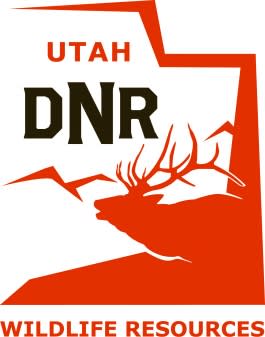Utah Burbot Bash at Flaming Gorge Draws 1,170 Anglers
Utah Division of Wildlife Resources 02.22.13

The 2013 Burbot Bash at Flaming Gorge Reservoir broke all kinds of records – the most anglers to participate, the most burbot caught, the most tags returned and the most money given away.
But the event was much more than a fun chance to gather on the ice with other anglers – it also led to the removal of more than 4,000 burbot from the reservoir. The event also gave biologists important information about an illegally introduced fish that could harm the reservoir’s fishery.
Results
The hosts for the event, Adam Eakle and Tonya Kieffer from KSL Outdoors, say the winning team caught 211 burbot during the two-night event. The largest burbot caught by an adult angler weighed 7 pounds and was 35 inches long. The largest burbot caught by a youth was 32 inches long while the smallest was a mere 9 inches.
A total of 1,170 anglers – formed into 563 teams – registered for this year’s bash. That’s more than twice the previous record.
In two nights, anglers caught 4,287 burbot. That edges the previous record set in 2011 when 485 anglers caught 4,022 burbot in eight nights.
“Our tag recapture rate also went up,” says Ryan Mosley, the Utah Division of Wildlife Resources’ lead aquatic biologist at Flaming Gorge.
Biologists have tagged 766 burbot in the reservoir since November 2010. That total includes 112 burbot that were tagged in January 2013 with 87 internal passive inductive transponder (PIT) tags and 25 external anchor tags.
A total of 13 tags were returned at this year’s event, which ran the nights of Feb. 1 and Feb. 2. The tags included 10 PIT tags, two anchor tags and one sonic tag that had been inserted into a burbot as part of a Utah State University study.
Each tag guaranteed the angler at least $300, with the anchor tags providing the best chance for the biggest money. Mosley says 25 burbot were tagged with anchor tags. “Amazingly,” he says, “two of the 25 fish were caught.”
Unfortunately, Mosley says, neither of the tags brought the anglers who caught them a big cash prize. “One tag number was only one-digit off from being a $2,500 winner,” he says.
Helping biologists
Mosley says of the 10 PIT tags that were returned, seven were placed in burbot in January 2011. Three were placed in January 2012. “The data collected from the returned tags will give us important information about how fast the burbot are growing and how far they’re moving,” he says.
Mosley says some of the fish had moved up to 16 miles from where they were first tagged. Although the rate the fish are growing varies, some of the burbot grew at a rate of about three inches and half a pound each year.
Biologists also took stomach samples from some of the burbot. Crayfish made up the bulk of their diet, but kokanee salmon, rainbow trout, smallmouth bass and even other burbot were found in some of the stomachs.
During the prize award ceremonies, Eakle and Kieffer shared some early results from the USU study:
USU tagged and released 31 burbot in November 2012. Researchers have tracked the fish over the winter. Two of the burbot moved four miles just 24 hours after being released. Another burbot moved 18 miles in only four days. And a burbot tagged in November was recently found near Firehole, Wyoming. The burbot had moved 40 miles after being tagged in the Linwood Bay portion of the reservoir in Utah.
Unfortunately, big females are spawning in December and January, which means they’re spawning before anglers at the Burbot Bash can remove them from the population.
A great event
Mosley says the Burbot Bash is a “win-win” for everyone involved.
“The event increases fishing pressure for burbot while generating biological data that helps us better understand the population in the reservoir,” he says. “It also gives us a great opportunity to interact with a lot of anglers to help them understand why stocking fish illegally is a bad thing to do.”
Mosley says calls, texts and emails he received before the event indicate many of the anglers who came to the event had never fished for burbot before. “In fact,” he says, “many of the anglers had never been to Flaming Gorge.”
Craig Amadio, fisheries biologist with the Wyoming Game and Fish Department, says most of the anglers who participated were Utah anglers who came from the Wasatch Front.
“Anglers from the Wasatch Front turned out in big numbers to fish alongside residents from the closer cities of Manila, Vernal, Roosevelt and Duchesne in Utah, and Green River and Rock Springs in Wyoming,” he says. “A few anglers came from much farther away, including St. George and Payson. Some anglers even came from other states.”

